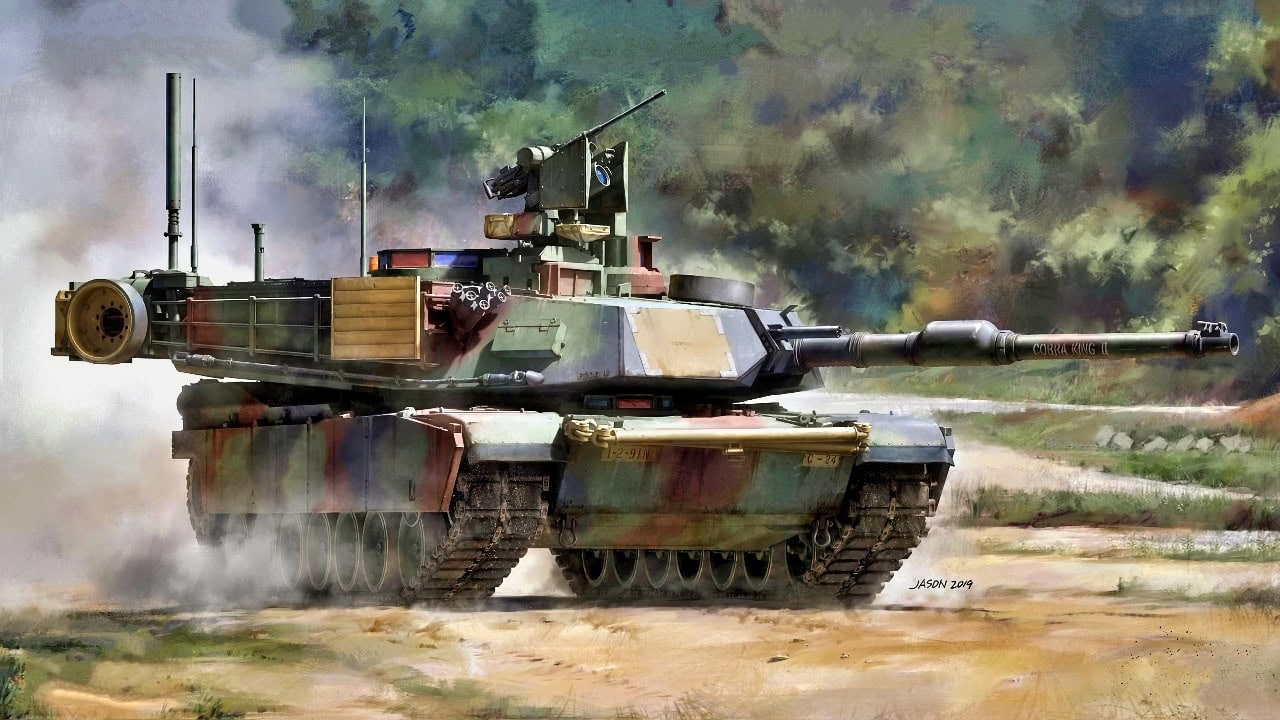The M1 Abrams is considered by many to be one of the greatest and most advanced in the world. With a glorious combat history and highly advanced systems, the Abrams has dominated pretty much every battlefield it has fought in.
However, what many do not know is that the Abrams has evolved significantly since its inception.
From its internal systems to its main cannon, the U.S. Army has been and will continue to constantly change the tanks so that it stays ahead of the curb.
The M1 Abrams’ Humble Beginnings
The M1 Abrams started development back in 1972 after the joint collaboration MBT-70 project failed, due in large part to miscommunication between the U.S. and West Germany. In the wake of the project, the Army began project XM815, which incorporated a few features and lessons learned from the MBT-70.
The first prototype of the M1 Abrams was eventually completed in 1978. This prototype contained many features which became a mainstay of the Abrams for the years to come. Among these were the Honeywell AGT1500 gas turbine engine, which provided superior power and mobility, and the Chobham composite armor, which offered enhanced protection against enemy fire. The initial model was armed with a 105 mm M68A1 rifled gun, capable of firing a variety of ammunition types.
M1 Abrams Enters the Fray
In 1980, the M1 Abrams finally entered service marking a significant milestone in American tank design. Its advanced fire control system, which included a laser rangefinder and ballistic computer, allowed for precise targeting and engagement of enemy forces. The FCS also included night vision sights for the commander and gunner, a feature which proved decisive throughout its early deployments. The tank’s design also prioritized crew safety, with features such as separate ammunition storage in a blowout compartment and nuclear, biological, and chemical (NBC) protection.
Evolution of the Abrams Tank
The Abrams has maintained its overall appearance, but under the surface, a lot has changed inside the tank. The original M1, while advanced for its time, possessed much similar electronics and fire control systems. The biggest difference, however, was the tank’s 105 mm M68A1 riffled cannon (the same gun used on the M60). While still a force to be reckoned with, the 105 mm gun would later be phased out.
The M1A1 upgrade was released just five years after the Abram’s acceptance into service in 1985. The main feature of the new variant was the 120 mm M256 smoothbore cannon which replaced the 105 mm. This new weapon significantly increased the tank’s firepower, allowing it to engage enemy armor at greater distances. The M1A1 also featured improved armor and a revised suspension system.
In 1992, the M1A2 variant was introduced and brought further advancements. These upgrades included an improved fire control system with digital enhancements and improved situational awareness for the crew. The tank’s armor was also enhanced with depleted uranium inserts, providing even greater protection against enemy projectiles.
After the Gulf War, the Army decided to upgrade the Abrams even further. The System Enhancement Package (SEP) program, initiated in 1999, brought digital networking capabilities to the M1 Abrams, allowing for better communication and coordination on the battlefield. The SEP upgrade also included improved thermal imaging systems and enhanced armor protection.
In 2005, the M1A2 SEPv2 variant was introduced which focused on further improving the tank’s electronics and communication systems. It featured a remote operated weapons station, advanced command and control capabilities, as well as upgraded armor and survivability enhancements.
As the Global War on Terror continued, the need for further upgrades was highlighted, resulting in the M1A2 SEPv3. Introduced in 2017, this upgrade included advanced power generation and distribution systems, improved ammunition data links, and enhanced protection against improvised explosive devices (IEDs).
The SEPv3 also provides the tank with superior situational awareness and targeting capabilities, making it one of the most advanced tanks in the world.
Combat Performance
The M1 Abrams dominated pretty much every battlefield it has seen. In operation Desert Storm and the Gulf War, the Abram’s effortlessly swept aside Iraqi operated T-72s with ease. It’s night vision systems provided the Abrams with a technological edge that allowed the tank to operate in all conditions.
In the following Wars on Terror, the Abrams took part in counterinsurgent operations and urban warfare. These conflicts showed some of the Abrams’ vulnerabilities, particularly to IEDs, but later variants addressed many of these issues and the tanks still performed well.
Ukraine is a blemish on the Abrams’ otherwise perfect track record. After taking significant losses, the tank was not the game changer many hoped it would be. The reason for this, I suspect, is the lack of American air and artillery support that the tank was designed around.
Operating in an ill-advised environment and against a numerically superior enemy does not bode well for any tank.
The Abrams is not Going Anywhere
Today, work is underway on yet more upgrades for the Abrams. The M1E3 is currently under development which is designed to make the Abrams’ lighter and more technologically advanced.
The AbramsX, on the other hand, intends to revolutionize the Abrams entirely, with a hybrid electrical engine, an unmanned turret, and even greater ISR capabilities.
What these upgrades show is that the Abrams still has a long future ahead and will remain relevant for years to come.
The M1 Abrams has been an invaluable tool for the United States Army. With its cannon, armor, and engine, the tank is the perfect blend of firepower, armor, and mobility. Thanks to its continual improvements, the Abrams has been and will continue to be one of the best and most advanced tanks in the world.
About the Author: Isaac Seitz
Isaac Seitz, a 19FortyFive Defense Columnist, graduated from Patrick Henry College’s Strategic Intelligence and National Security program. He has also studied Russian at Middlebury Language Schools and has worked as an intelligence Analyst in the private sector.

